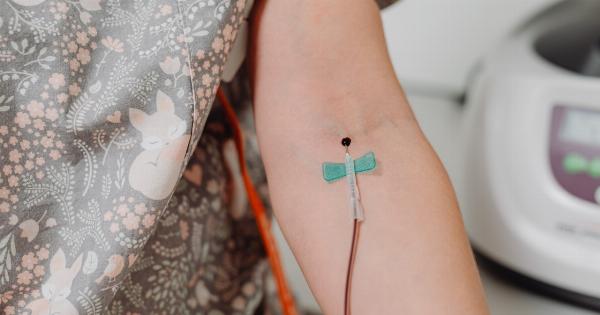Venous thrombosis, also known as a blood clot, occurs when a blood clot forms within a vein. It typically affects the deep veins of the legs or pelvis but can also occur in other parts of the body.
If left untreated, venous thrombosis can lead to serious complications, such as pulmonary embolism, which occurs when the blood clot travels to the lungs.
Risk Factors for Venous Thrombosis
Several factors can increase the risk of developing venous thrombosis:.
- Age: The risk increases with age, especially over 60.
- Family history: Having a close family member with a history of blood clots can increase the risk.
- Obesity: Being overweight or obese puts additional pressure on the veins, making blood clot formation more likely.
- Prolonged immobility: Sitting or lying down for extended periods, such as during long flights or bed rest after surgery, increases the risk.
- Pregnancy and childbirth: Hormonal changes during pregnancy and the pressure on veins during childbirth can contribute to blood clot formation.
- Smoking: Smoking damages blood vessels and increases the risk of blood clots.
- Medical conditions: Certain medical conditions, such as cancer, heart failure, and inflammatory bowel disease, increase the risk.
- Medications: Certain medications, such as hormone replacement therapy and birth control pills, can increase the risk of blood clots.
Preventing Venous Thrombosis
Preventing the onset of venous thrombosis is crucial, especially for individuals with risk factors. Here are some preventive measures:.
1. Stay Active
Regular exercise can help improve blood circulation and reduce the risk of blood clot formation. Incorporating activities that involve leg movements, such as walking, cycling, or swimming, can be particularly beneficial.
2. Maintain a Healthy Weight
Obesity puts extra pressure on the veins and increases the risk of blood clot formation. It is essential to maintain a healthy weight through a balanced diet and regular physical activity.
3. Avoid Prolonged Immobility
If you have to sit or lie down for extended periods, make sure to take regular breaks and move around. Flexing and extending your feet and ankles while sitting can also help improve blood flow.
4. Wear Compression Stockings
Compression stockings can help prevent blood from pooling in the legs and reduce the risk of blood clot formation. They apply pressure to the legs, promoting better circulation.
5. Stay Hydrated
Drinking an adequate amount of water helps keep the blood thin, reducing the risk of blood clots. It is important to stay hydrated, especially during long flights or when immobile for extended periods.
6. Quit Smoking
Smoking damages blood vessels and increases the risk of blood clots. Quitting smoking promotes better overall health and reduces the chances of developing venous thrombosis.
7. Manage Medical Conditions
If you have existing medical conditions that increase the risk of blood clots, it is essential to manage them effectively. Follow your healthcare provider’s recommendations and take prescribed medications as directed.
8. Be Aware of Oral Contraceptives and Hormone Replacement Therapy
If you are taking oral contraceptives or undergoing hormone replacement therapy, discuss the potential risks with your healthcare provider. They can help assess your individual risk and suggest alternative options if necessary.
9. Follow Post-Surgical Recommendations
If you have undergone surgery, it is crucial to follow your surgeon’s post-operative instructions. This may include wearing compression stockings, moving and exercising as recommended, and taking prescribed medications.
10. Know the Symptoms
Being aware of the potential signs and symptoms of venous thrombosis can help prompt early medical intervention. Seek medical attention if you experience swelling, pain, warmth, or redness in the affected area.



























